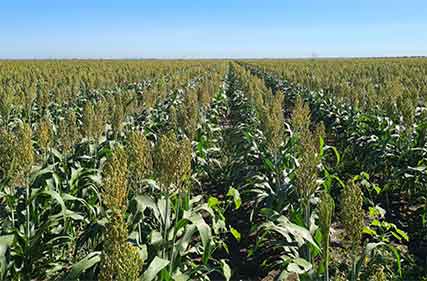
The national median price per hectare rose 12% to $8,625/ha, following a gain of 18.1% in 2022 and a 18.2% gain in 2021.
Elders Rural Property Update analysing the performance of rural property values in 2023 compared to 2022, shows rural property continues to prove a resilient, high performing asset class.
The rural property market performed strongly in 2023 to post another strong annual gain, the eighth successive annual rise in the national median, to $8,625/ha up 12% on 2022.
Elders General Manager Farmland Agency & Agribusiness Investments Mark Barber said property prices have been remarkably resilient.
“This latest rise pushes the five-year compound annual growth rate to 10.1%, a rate that, if sustained, would see property prices double every seven years. In comparison, these returns compare favourably to the top performing Australian equities and Sydney residential property,” said Mr Barber.
After facing some headwinds including falling commodity prices, rising input costs and poor seasonal outlook through the early part of 2023, the key drivers turned in favour of rural landholders from mid-2023.
Key commodity prices stabilised, input costs fell, weather conditions improved, and the Reserve Bank of Australia (RBA) took its foot off interest rate increases. This combined to sharply lift confidence across the rural sector and provide the impetus for price rises in 2023.
Key points for the year 2023:
- national median price per hectare rose 12% to $8,625/ha, following a gain of 18.1% in 2022 and a 18.2% gain in 2021
- the five-year compound growth rate (CAGR) was 10.1%, meaning prices would double in 7.2 years if this rate could be sustained
- the numbers of properties offered for sale declined 13.9% to 5,810 as farmers reacted to a softening in market conditions in the early part of 2023
- the total amount of stock offered for sale in 2023 was $12.5b, down from $14.4b and $14.6b in 2022 and 2021 respectively
While the annual median shows that national property values improved in 2023, quarterly median prices paint a different story with strong improvements through Q3 and Q4 of 2023, after falls during Q2. By year’s end, the quarterly median was tracking above the long-term sales price trend.
“By the end of 2023 we saw farmers terms of trade start to recover, and seasonal conditions improved despite earlier dire predictions,” said Mr Barber.
This led to a sharp rebound in farmers’ confidence and the softening of farmland values in the first half of the year reversed in the second half of the year.
The strongest performing states were Western Australia (WA) and Victoria where the annual median showed growth of 17.6% and 14.6%, respectively.
While the annual median shows that national property values improved solidly in 2023, quarterly median prices paint a different story with strong improvements through Q3 and Q4 of 2023, after falls during Q2. By year’s end, the quarterly median was tracking above the long-term sales price trend.
“By the end of 2023 we saw farmers terms of trade start to recover, and seasonal conditions improved despite earlier dire predictions,” said Mr Barber.
“This led to a sharp rebound in farmers’ confidence and the softening of farmland values in the first half of the year reversed in the second half of the year.
“The strongest performing states were Western Australia (WA) and Victoria where the annual median showed growth of 17.6% and 14.6%, respectively.”
Elders sourced transactional level data for every rural property sale above 40 hectares in Australia from Corelogic before undertaking in-depth analysis to remove non-agricultural land uses and statistical outliers. Analysis and commentary is provided by Richard Koch, Elders Business Intelligence Analyst, and Elders’ national network of rural real estate experts.
To download Elders Rural Property Update in full and to subscribe to future updates visit, elders.com.au/for-farmers/market-insights/rural-property-update
